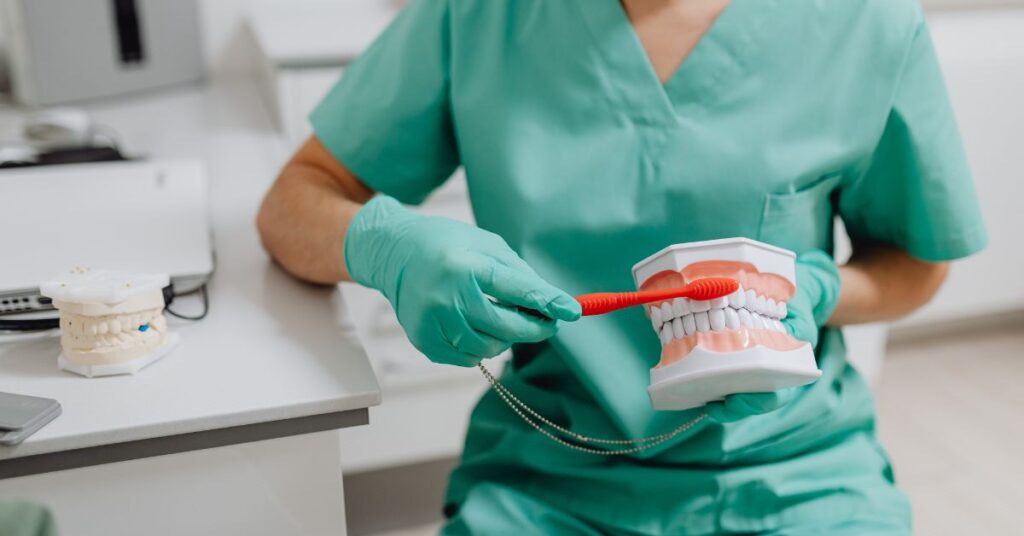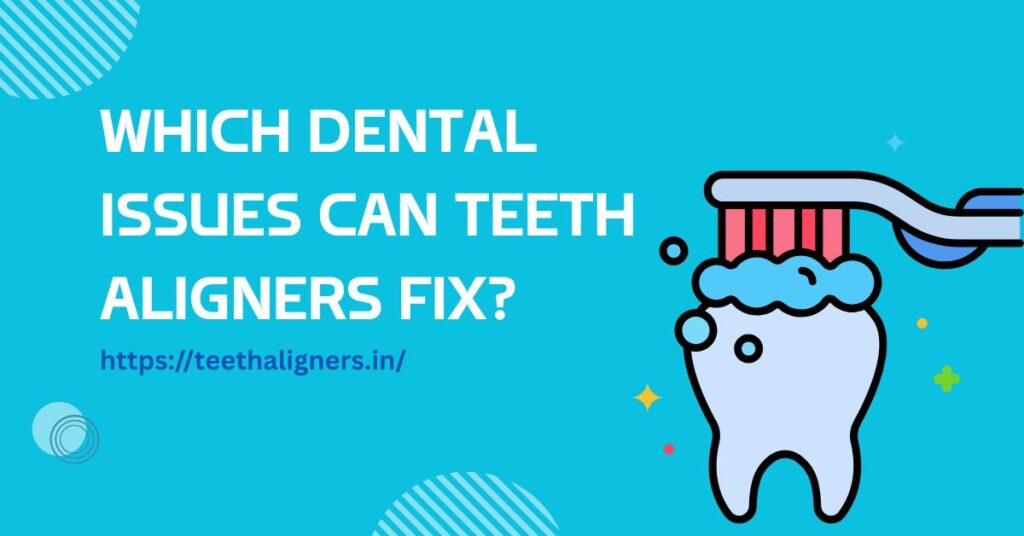Many people feel self-conscious about crooked or misaligned teeth. These problems can affect the way you smile, chew, or even talk.
For a long time, the only way to fix these issues was with metal braces, which could be uncomfortable and very noticeable.
But today, there’s a modern solution that more and more people are choosing—Teeth Aligners.
Aligners are clear, removable trays that straighten your teeth without wires or brackets. In places like India, where people want a solution that’s both effective and easy to manage, aligners are quickly becoming a top choice.
One trusted name helping people achieve better smiles is Teeth Aligners in India, offering clear aligners that fit into your lifestyle with ease.
Let’s take a closer look at how aligners work and which dental issues they can actually fix.
Table of Contents
ToggleWhat Are Teeth Aligners and How Do They Work?
A Quick Look at Aligners
Teeth Aligners are clear plastic trays designed to fit snugly over your teeth. Each tray is custom-made using 3D scans or dental impressions, ensuring a precise fit tailored to your mouth.
They’re smooth and nearly invisible, making them a popular choice for people who want a more discreet way to straighten their teeth.
Unlike traditional braces, these aligners have no metal, wires, or sharp edges. You can remove them while eating or brushing, which makes everyday life more comfortable.
This freedom is especially helpful for students and professionals who prefer a low-key treatment option. Custom Dental Aligners offer flexibility without compromising effectiveness.
How They Move Teeth
Aligners work by applying gentle pressure to your teeth. This pressure slowly shifts your teeth into better positions over time.
Most treatment plans involve wearing a series of trays, with each one being slightly different from the last. You’ll usually switch to a new set every one to two weeks.
Each new tray moves your teeth a little further, helping to guide them into place step by step. This process can take anywhere from a few months to over a year, depending on the problem being treated.
Your dentist or orthodontist will check your progress and make sure everything is moving as planned.
Common Dental Problems Teeth Aligners Can Fix
Crowded Teeth
Crowded teeth happen when your mouth doesn’t have enough space for all your teeth to fit properly.
This can make your teeth twist, overlap, or push against each other. Besides affecting your smile, crowding can make it harder to brush and floss, leading to tooth decay and gum problems.
Aligners work by gradually creating space between your teeth. Over time, the trays move each tooth into a better position, helping them sit neatly in line.
This not only improves your smile but also makes it easier to clean your teeth properly.
Gapped Teeth
Some people have extra space between their teeth, known as gaps. These gaps can be small or quite noticeable and may occur in the front, back, or sides of the mouth.
Gaps may form naturally, or they might happen after losing a tooth.
Aligners can help by gently pulling the teeth closer together. Each new tray encourages the teeth to move bit by bit, closing the gaps over time.
Fixing these spaces can improve both how your teeth look and how they work when you bite down.
Overbite and Underbite
An overbite is when your top teeth stick out too far over your bottom teeth. This can lead to uneven wear on your teeth, jaw pain, and even speech problems.
On the other hand, an underbite is when your lower teeth push out in front of your upper teeth, which can also cause similar issues.
Aligners are often used to correct mild to moderate cases of overbite and underbite. They guide the teeth into a more natural position, helping to improve the bite and reduce strain on your jaw muscles. In many cases, this makes chewing and speaking much easier.
Crossbite and Open Bite
A crossbite occurs when some of your upper teeth bite inside your lower teeth instead of outside.
This can make your teeth wear down unevenly and may even cause gum problems. An open bite is when your upper and lower teeth don’t meet when you close your mouth, which can affect your speech and ability to chew.
Aligners are designed to fix these types of bite problems by moving the teeth into better alignment.
With careful planning and regular checkups, most mild cases of crossbite and open bite can be improved without braces.
Cases Where Aligners May Not Be Enough
Severe Bite Issues or Jaw Problems
While aligners can fix many common problems, they aren’t always the right choice for everyone.
Some people have serious bite issues or jaw bone problems that can’t be corrected with aligners alone.
For example, if the jaws don’t align properly or there’s too much crowding, braces or even surgery might be necessary.
In such cases, your dentist or orthodontist will do a full evaluation, often with X-rays, to see what kind of treatment is needed. If aligners can’t solve the issue, they’ll suggest other options that may give better results.
Children with Baby Teeth
Aligners are generally designed for teenagers and adults who have all their permanent teeth. This is because the treatment relies on stable, fully developed teeth and jaw structures to guide movement effectively.
For younger children who still have baby teeth or are in the early stages of mixed dentition, aligners are usually not recommended.
Their mouths are still growing, and teeth naturally shift as new ones come in. This ongoing development can make it difficult to plan an effective and consistent aligner treatment.
That said, some newer aligner brands are exploring options specifically for younger children, offering systems tailored to growing mouths. However, these are still relatively new, and not every child will be a suitable candidate.
It’s important to consult with a dental expert or orthodontist who understands your child’s development.
They can evaluate your child’s age, oral health, and growth stage to determine whether aligners are appropriate—or if it’s better to wait or consider another orthodontic approach.
Real Examples and Success Stories from India

Teenager with Crowded Teeth in Delhi
In Delhi, a 14-year-old student struggled with crowded lower front teeth. She was shy about her smile and often avoided photos.
Her dentist suggested aligners as a more comfortable and discreet option compared to metal braces.
Within just 12 months, her teeth were aligned properly. Her confidence grew, and she even started smiling more in class photos and family events.
Adult with Gaps in Mumbai
A 34-year-old man from Mumbai had noticeable gaps between his front teeth, which affected his confidence, especially during professional meetings and social interactions.
He was looking for a solution that was discreet, comfortable, and wouldn’t interfere with his daily routine. Traditional dental braces didn’t appeal to him due to their visibility and fixed nature.
After consulting with a specialist, he began treatment with clear aligners from Teeth Aligners in India.
Within the first few months, he noticed visible improvement, and by the tenth month, the gaps had almost completely closed. His smile looked more aligned and natural, boosting his self-esteem.
Not only did he feel more confident in public, but he also found it easier to communicate during work presentations and social events.
His experience is just one example of how aligners can be a practical and effective choice for adults, providing noticeable results without the hassle of wires or brackets.
It highlights that clear aligners aren’t just for teens—they offer real, lasting results for people of all ages.
Conclusion
Dental issues like crowding, gaps, overbites, and crossbites can make life a little harder—but they’re also very fixable. That’s the good news.
Thanks to clear, removable trays, Teeth Aligners In India are giving people a chance to straighten their teeth without wires, discomfort, or embarrassment.
Whether you’re a teenager or an adult living in India, aligners offer a smooth, quiet path to a better smile.
Still, aligners aren’t for everyone. If your case is more complex or you’re still growing, other options may work better. But for most mild to moderate dental issues, aligners are a great solution.
If you’re thinking about improving your smile, talk to a dental expert today. You deserve to feel good when you smile—and the right treatment can help you get there.

